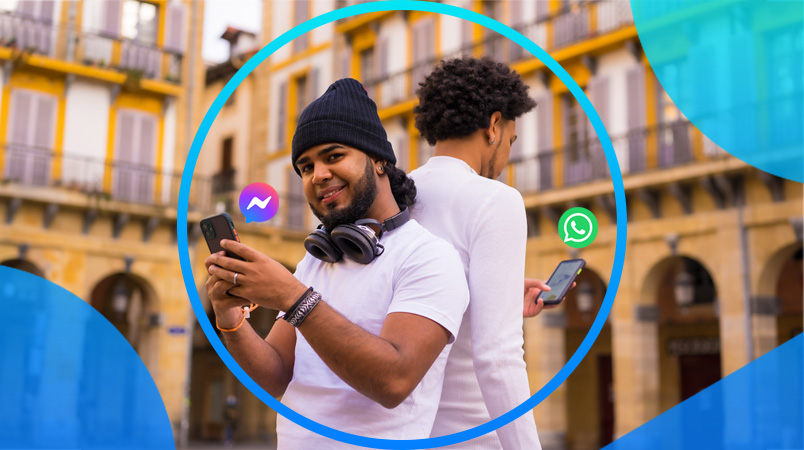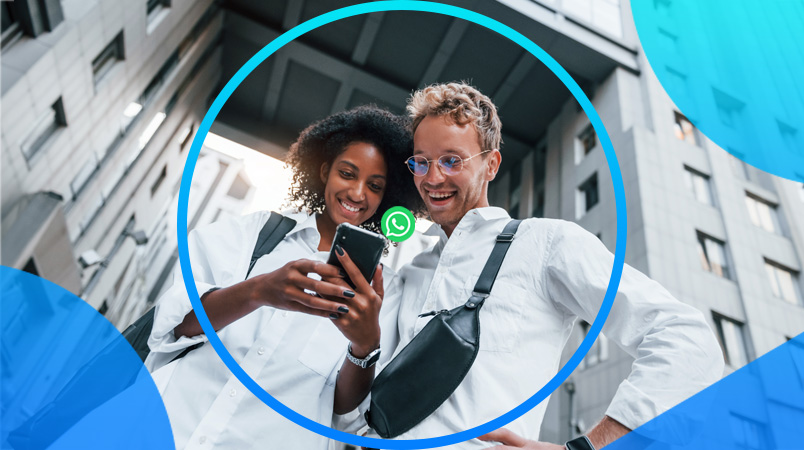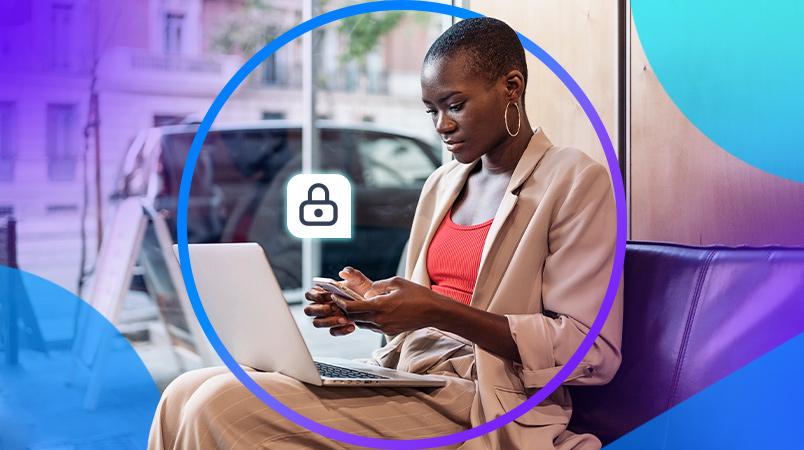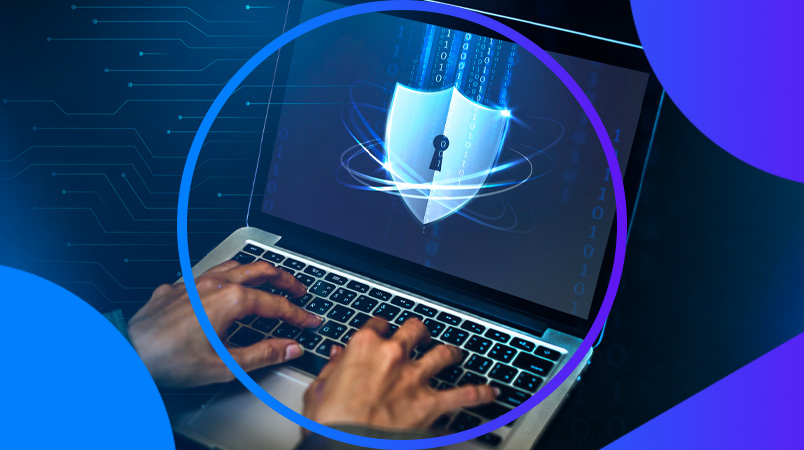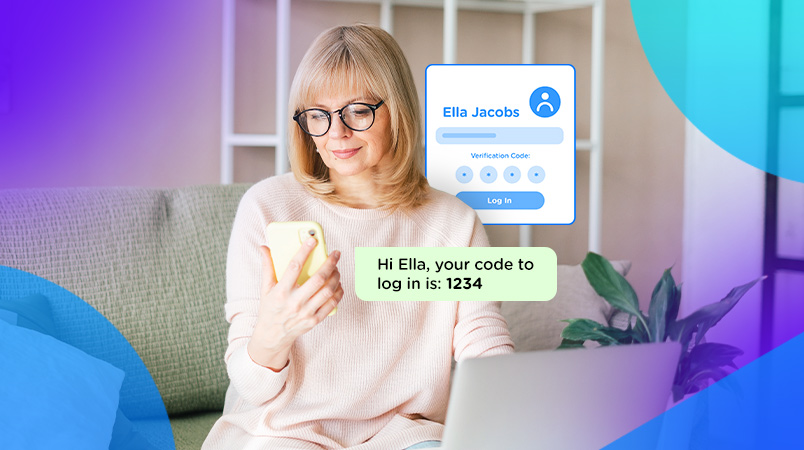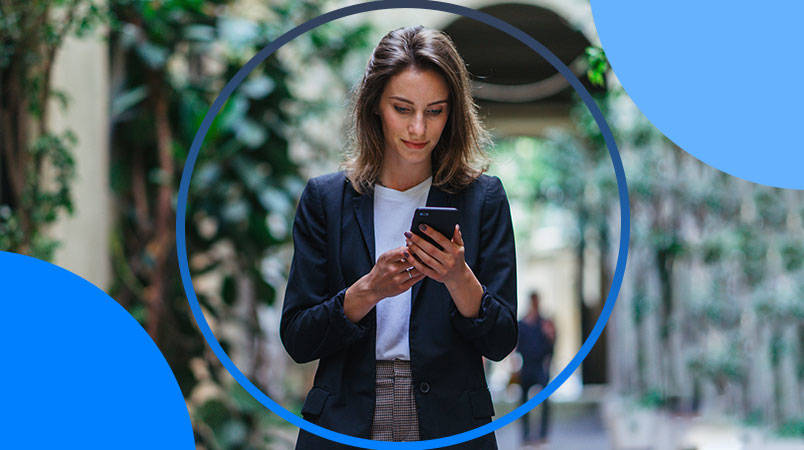WhatsApp is currently one of the most popular social apps. It's considered a titan among messaging channels, with two billion people across the world using WhatsApp on a monthly basis, sending about 100 billion messages each day! WhatsApp Business Platform is already known to be a great tool for customer communication, with its global reach and enticing features, but did you know it's also possible to send One Time Passwords?
One Time Passwords (OTP) via WhatsApp
Traditionally, we're used to receiving One Time Passwords for two-factor authentication via SMS or email, but these text messages aren't encrypted. Hackers aim to intercept OTPs, and these unencrypted messages tied to your phone number can be the victim of phishing or social engineering fraud.
Hence, businesses are looking for new ways to send these OTPs to their customers with as low a risk as possible. And that's where the WhatsApp Business Platform comes in.
One Time Passwords via WhatsApp are end-to-end encrypted and secure, making it one of the safest options out there, and the innovative features and global reach make for a great customer experience. The seamless use of OTP message templates allows you to initiate contact with your customers, verifying their identity at multiple touchpoints during their customer journey, such as login, account registration, or account recovery.
It's good to know that WhatsApp Business identifies four conversation categories: service (user-initiated), utility (business-initiated), marketing (business-initiated), and authentication (business-initiated). OTP message templates belong to the authentication conversation category (and will also be priced as such).
Benefits of WhatsApp Business OTP
Some key benefits of One Time Passwords via the WhatsApp Business Platform:
Reach: WhatsApp is immensely popular, and utilising the favorite messaging channel of your customers will increase the experience with your business. Your customers are already familiar with WhatsApp. Now they can use the app they already use for communication for OTPs.
Communication: Customers can easily communicate and ask questions over WhatsApp if they encounter any issues in the authentication process.
Security: WhatsApp OTPs are end-to-end encrypted, making them more difficult to intercept or misuse than traditional channels.
How to Start Sending OTP via WhatsApp
First, you need access to the WhatsApp Business Platform. You can sign up for a WhatsApp Business account via a Business Service Provider (BSP) like CM.com. Are you already using WhatsApp for your business? Then setting up the OTPs will be easy.
To send OTPs, you need to use an authentication template with a One Time Password button (OTP) to deliver the password or code. You can use a pre-existing authentication message template or create your own and submit it for approval. OTP templates have some requirements they need to meet, as explained below.
Authentication Templates with OTP Buttons
Authentication message templates with OTP buttons generally look as follows:
Preset authentication message template fixed text:
<VERIFICATION_CODE> is your verification code.
Security disclaimer (optional): Do not share this code for your security.
Expiration warning (optional): This code expires in <NUM_MINUTES> minutes.
Button: Either a copy code or a one-tap autofill button.
1234 is your verification code. Please do not share this code for your safety. This code will expire in 10 minutes.
[Copy Code]
URLs, media, and emojis are not supported in OTP Authentication conversation messages. Because the messages consist of only text and buttons, the risk that they will be paused or delayed is minimized.
Buttons
As stated above, Authentication templates have to include either a copy code or a one-tap autofill button. The difference between these two buttons is how they behave after being tapped by your customer:
A copy code button copies the One Time Password or code to the customer's clipboard. They can then manually switch to your app and paste the password or code into your website or app.
A one-tap autofill button automatically loads and copy+pastes the One Time Password in your website or app.
The one-tap buttons offer the best user experience, but they are currently only supported on Android, and they might require some additional IT development to make them work.
WhatsApp OTP Best Practices
Once you've created your first OTP message template, here are some best practices to keep in mind:
Confirm the WhatsApp phone number of your customer before sending the One Time Password to that number.
Make sure to manage the customer's expectations. Let them know the code will be delivered to their WhatsApp phone number, especially if your business offers multiple ways to receive OTPs.
Once the customer has successfully entered the code or OTP to your website or app, let them know that your business received it and whether or not the code was correct.
Start Sending Your OTP via WhatsApp
Increased security with a global reach and customer relationship enhancement over the favorite messaging channel of your customers? Who would say no to that? Are you also excited to get started with WhatsApp One Time Passwords? Talk to one of our experts to request a demo and find out everything you need to know about pricing, implementation, or anything else you might need.


